My Thoughts on Honey Bee Swarms
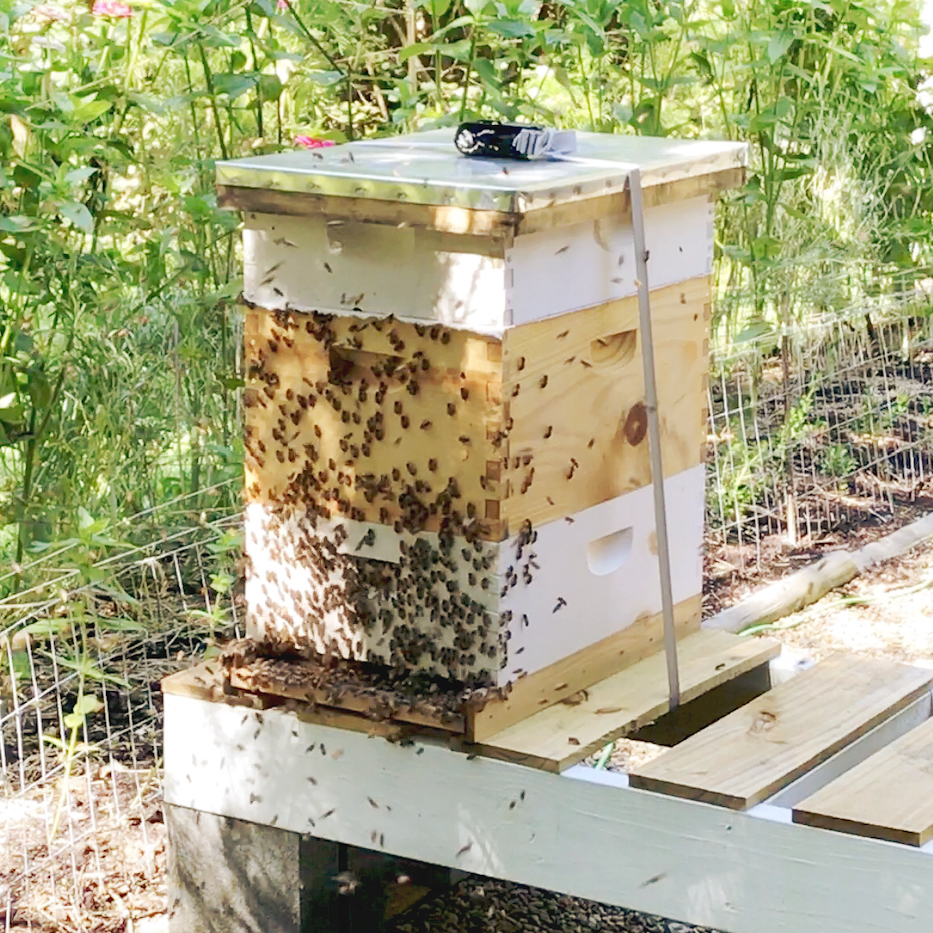
Beekeeping is humbling. Just when you think everything is running tickety-boo something crazy happens and makes you question everything. Today we had another hive swarm (see photo above), in late summer, no less, when I thought we were safe! Conventional beekeeping practices utilize measures to prevent swarms with frequent inspections, interventions and manipulations. Jesse and I are not conventional beekeepers. We’re muddling our way through this learning process with the focus of trying to keep the bees’ needs over our own. Therefore, we do nothing to intervene on the bees’ decision, collectively, to pack up half the hive and the older queen and jump ship.

I think it’s important to mention that we live in the woods. A hobbyist beekeeper who keeps hives in a more populated area might have to control the swarms to prevent any problems arising from thousands of bees landing in someone’s backyard. (By the way, a bee swarm is very docile! Without a hive to protect, they are not aggressive one bit. If you see a swarm, please don’t bother it or, God forbid, spray it with anything. Call your local beekeeping society and have a beekeeper come and collect it.)
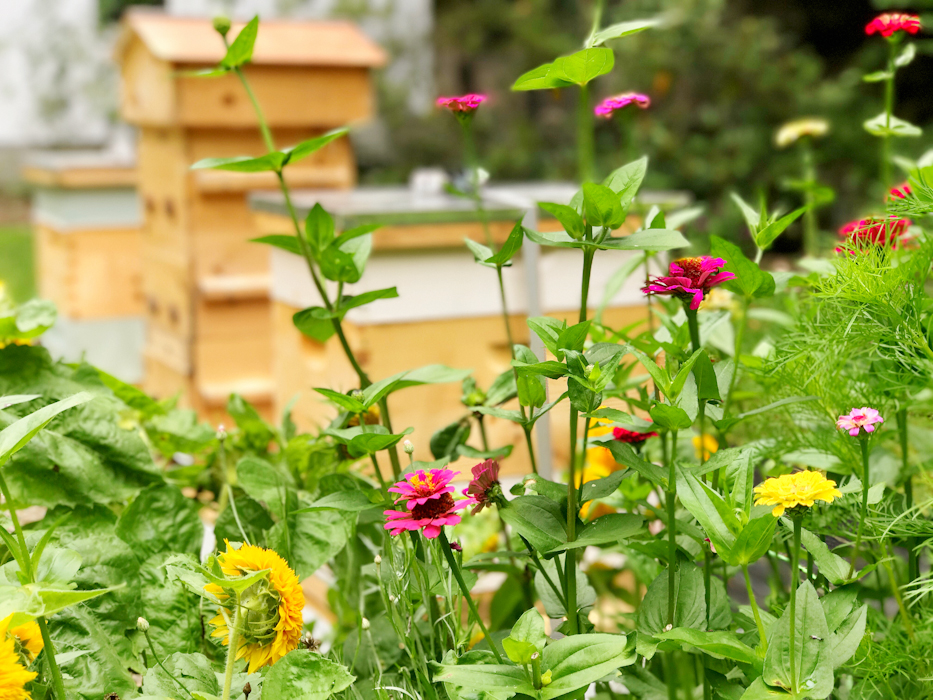
As I said, we’re still finding our way here, but our research is convincing us that swarming is a good thing. Why is that? Because a colony that chooses to swarm is doing so for the overall health of their superorganism. Beecentric beekeepers allow bees to expand and contract their populations on their own terms with the idea that this will:
● help break the varroa mite cycle
● provide diversity within the gene pool
● replenish wild bee populations
If you’re curious to learn more about allowing bees to swarm naturally, sometimes referred to as “rewilding”, I think this article by The Natural Beekeeping Trust says it best!
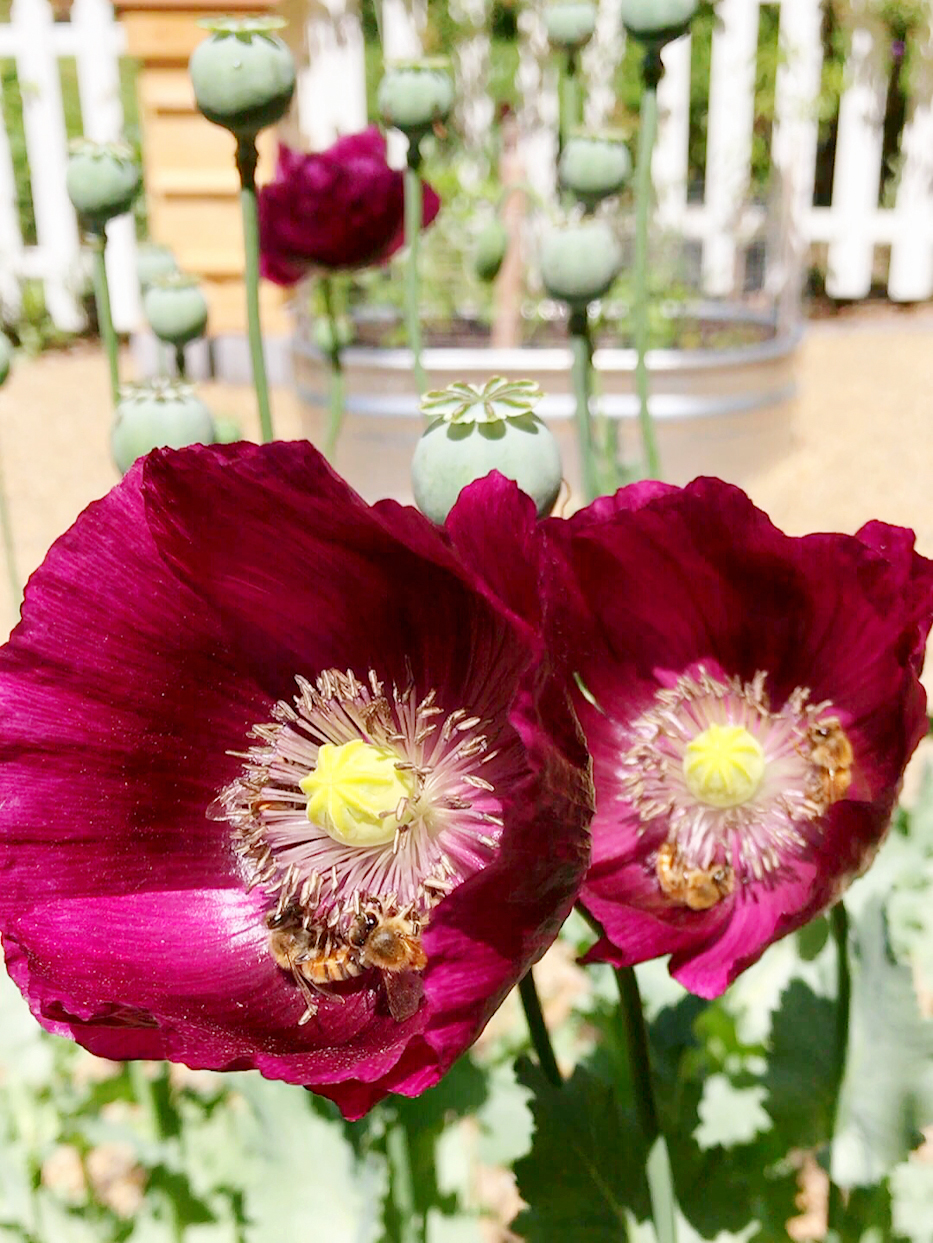
Let’s talk about “natural beekeeping” a phrase that gets bandied about quite readily with varied definitions depending on the beekeeper. I guess you could say on the spectrum of natural vs conventional, we fall closer to the natural side of things but let me be clear, I don’t intend to ignore a potentially catastrophic problem such as varroa or foulbrood. I will respond as needed. {EDIT: Since writing this post I have done even more reading about treatment free beekeeping and it’s making a lot of sense to me. Do we want to save the hive or save the species? If you’re interested in learning more about this, start with this article and then watch this video and this video. I wrote how I will “respond as needed” but truthfully, I’m not sure what that will be yet. So much more to learn.}
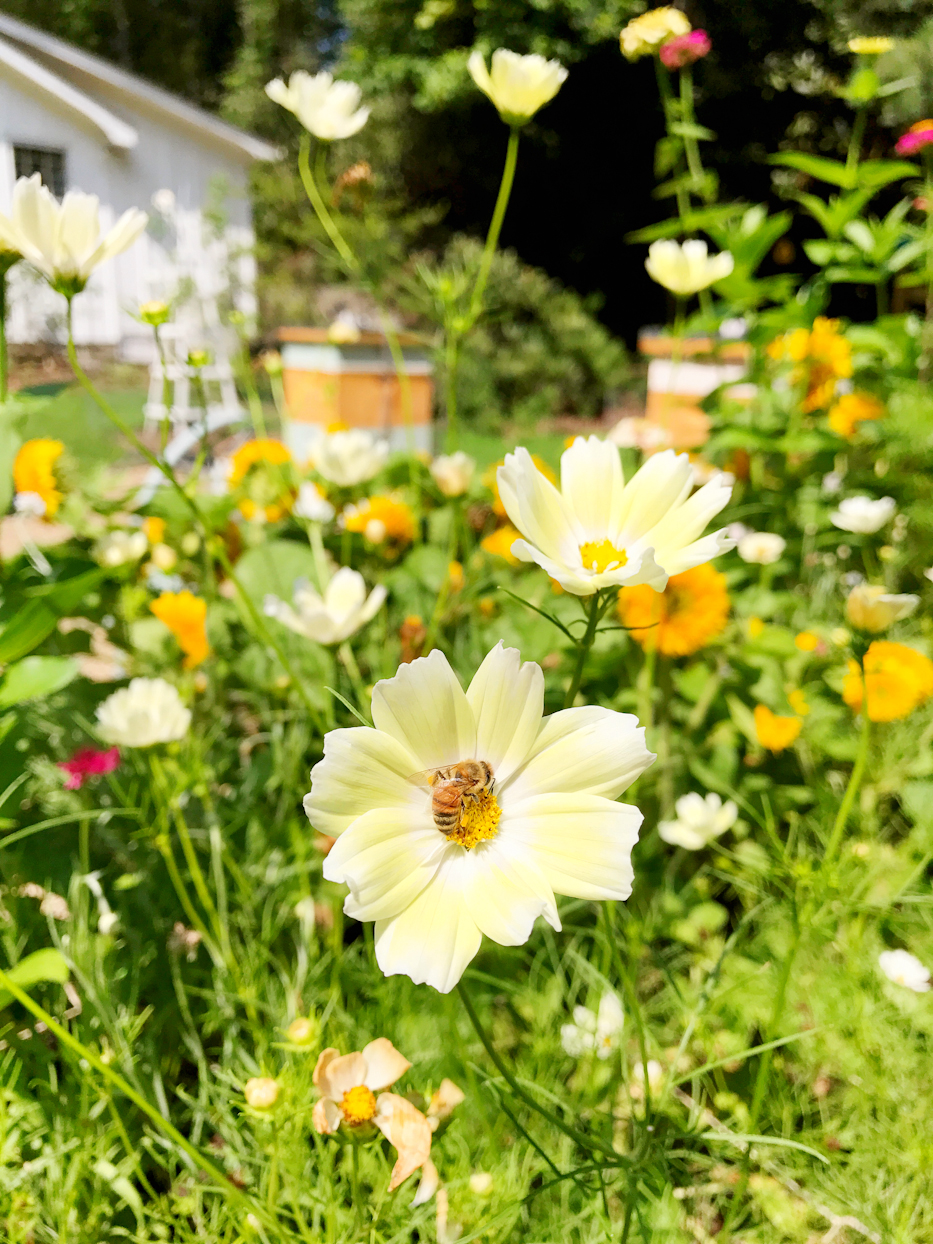
I think a better way to describe our methods is “beecentric” which for us means we want to provide the best environment to thrive while managing health with minimal interventions. This would include: a hive style that suits their natural instincts for comb building, raising brood and methods for controlling internal conditions, a pesticide free forage area, bee-motivated vs beekeeper-motivated population controls, limited interference (opening and reopening the hive.) To sum up, we’re not in it for the honey. We’re in it for the bees. (And I hope we do right by the honey bees AND the native bees.)
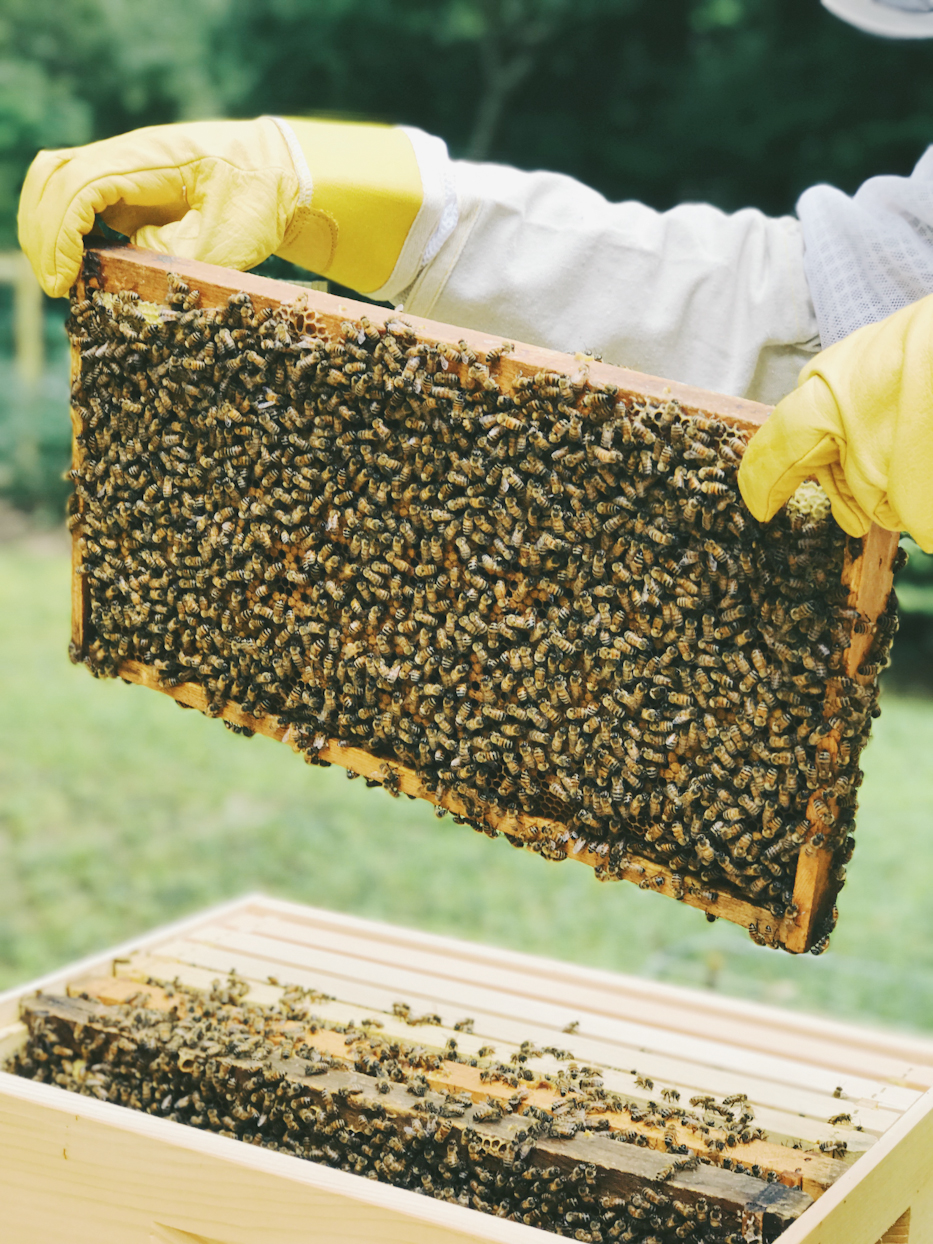
Let’s talk about our hives: Some of you might recall that we recently added two new Langstroths in spring. At the time, we were both feeling pressured to use them even though we already loved the Warré and it’s methodology. As a matter of fact, our own beekeeping society of which we are members made us feel ostracized when we reached out in spring with questions regarding laying workers. We felt effectively “shut down” when I told them we had Warré hives and nobody ever got back to us with help or promised mentorship. I’m sure it wasn’t personal, but after that, we felt adrift.* It was then that Jesse and I discussed moving forward with purchasing Langs to see what all the fuss was about. The components would be readily available from multiple sources, we would have an easier time adding new bees (nucs vs packages), we would feel more in step with our local beekeeping community. So we brought them home but it was clear from the start that we enjoy the Warré so much more when we began “pimping our Langs” to function more like a Warré. Frankly, we don’t like Langstroth one bit and I’m sure that’s entirely due to the fact it’s not designed for the bees but for the beekeeper. I should really try to reserve judgement until we’ve completed a whole year’s cycle with them but that’s how we feel so far. Besides the fact I do not like the hive design at all, I dislike inspections. They feel invasive and disruptive. The idea of pulling each and every individual frame is upsetting to me, even though we are incredibly careful. (We do use smoke although I know that’s a divisive subject among beekeepers.) This is very hard for me to admit and I went through a blue period about it as I had studied these methods for so long and thought I’d enjoy inspections and manipulations so much more. When it became clear that I would never be a conventional beekeeper with dozens of Langstroths it felt like a door closed and I’m still trying to process that. Nonetheless, with regard to our swarms, the first, in the spring, was the Warré and the second was the pink Langstroth hive so I don’t think it had anything to do with the hive style. Some of you experienced beekeepers may be asking, “Didn’t you notice swarm cells on your last inspection?” Our last inspection was 3 weeks ago and the rain has prevented us from going back in. But, keep in mind, that we wouldn’t have done anything even if we had.
* If you are in the Asheville area, I cannot recommend Wild Mountain Bees enough. No one there ever made us feel like losers because we wanted to try a less standard approach. They have always been incredibly helpful and willing to take the time to try and help us with any questions that we have. We’re so grateful to have them nearby as a resource.
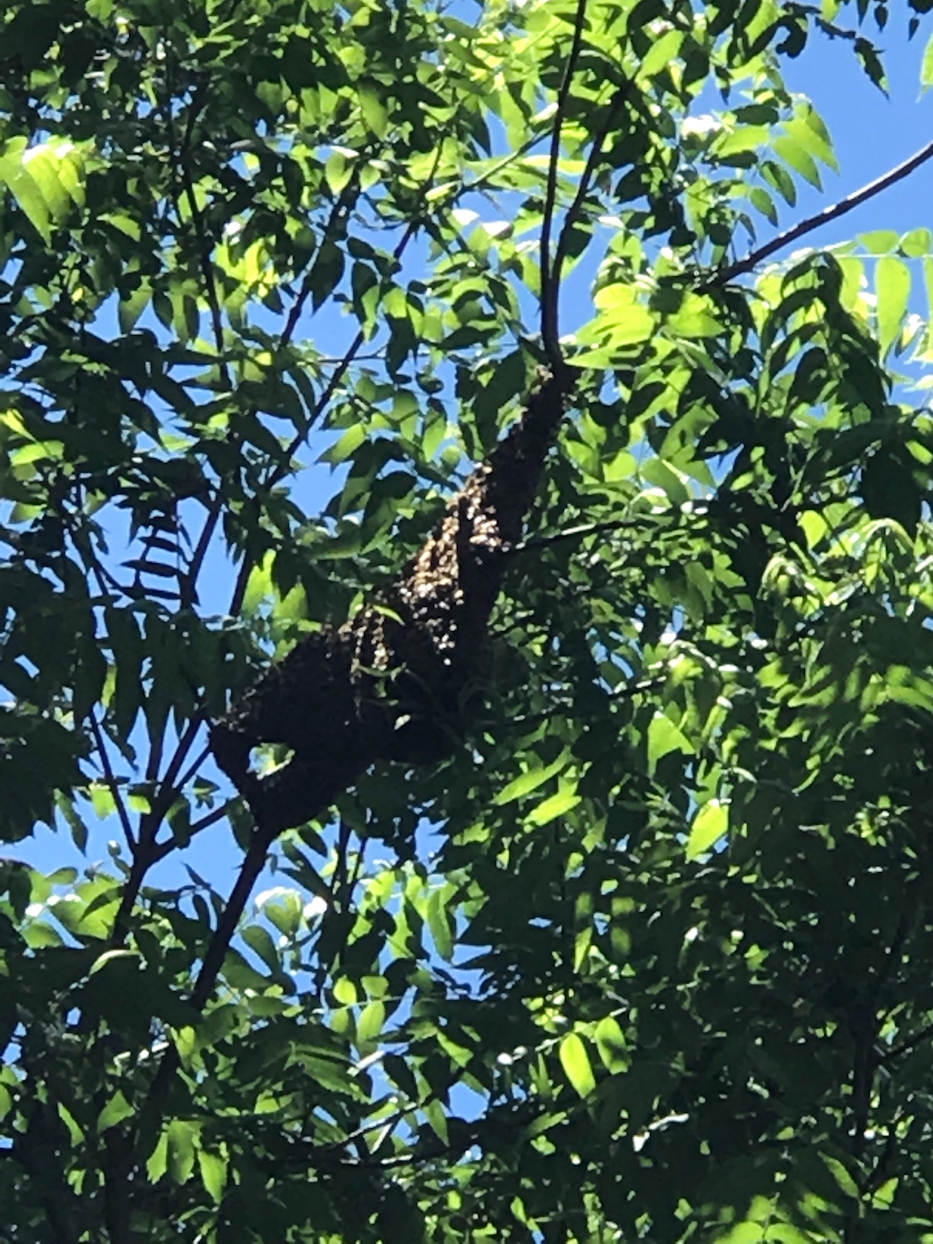
So why did they swarm? I don’t know for certain but comparing these two colonies and their time of swarming provides some clues. First off, both colonies had plenty of food and room to grow. I don’t think that had any bearing. What I did observe was that both hives:
● had very strong queens. Populations were increasing at a breakneck pace.
● were under the influence of supplementary feeders. I’m going to talk about that in a minute.
● swarmed on the first sunny day after weeks of rain.
Here’s a video of the Warré swarming in spring. (Pardon the mess. We’re still completing the renovations back here!)
Here is a video of the Langstroth swarming. Crazy, right?
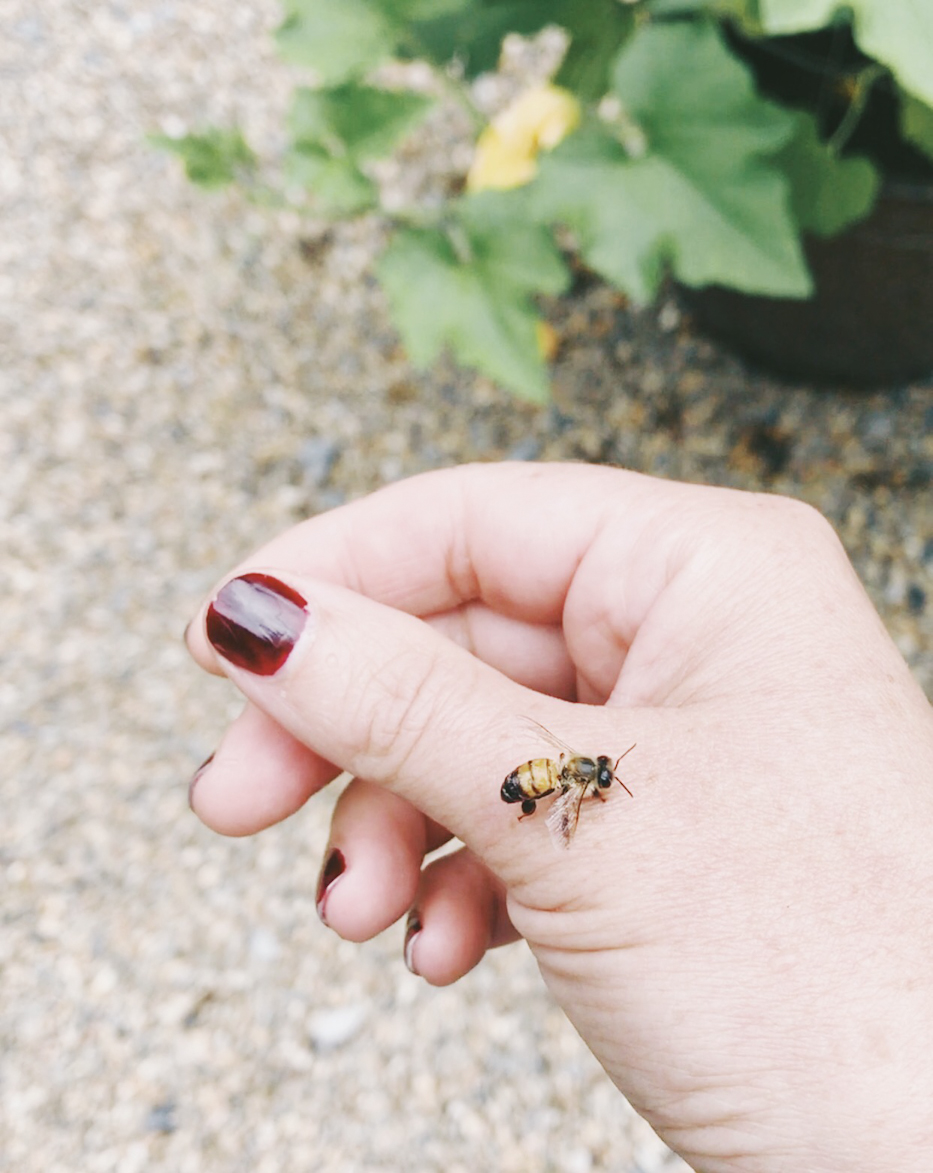
About those feeders: both hives are brand new and were receiving some additional sugar water to help them get new comb built. I think in the case of the Warré, they had a strong queen, lots of comb and brood and the influence of the feeders gave them the idea that food sources were plentiful. Combine that with the weather and our first sunny day they split. (Recall that swarming is like the hive giving birth. It’s a sign of a strong, healthy colony.) With regard to the Langstroth, same thing in terms of strong queen and weather patterns. However, I think removing their feeder triggered the swarm cell. Suddenly their additional “nectar” stopped flowing. This is why I am still heavily debating feeding my bees. I can see that they might need it in the first few weeks after installing, but I think after that it’s too much of an artificial influence on their idea of nectar availability and can jack things up. We are heading into colder months soon and will have to make a decision on whether or not to provide some additional food. Of course, we have not harvested any honey so they will have all their own stores. I’m rambling. This is a whole other topic. Let’s move on.
If you’re curious to read more about the topic of feeding bees, there’s a great article by beekeeper extraordinaire Hilary Kearney HERE.
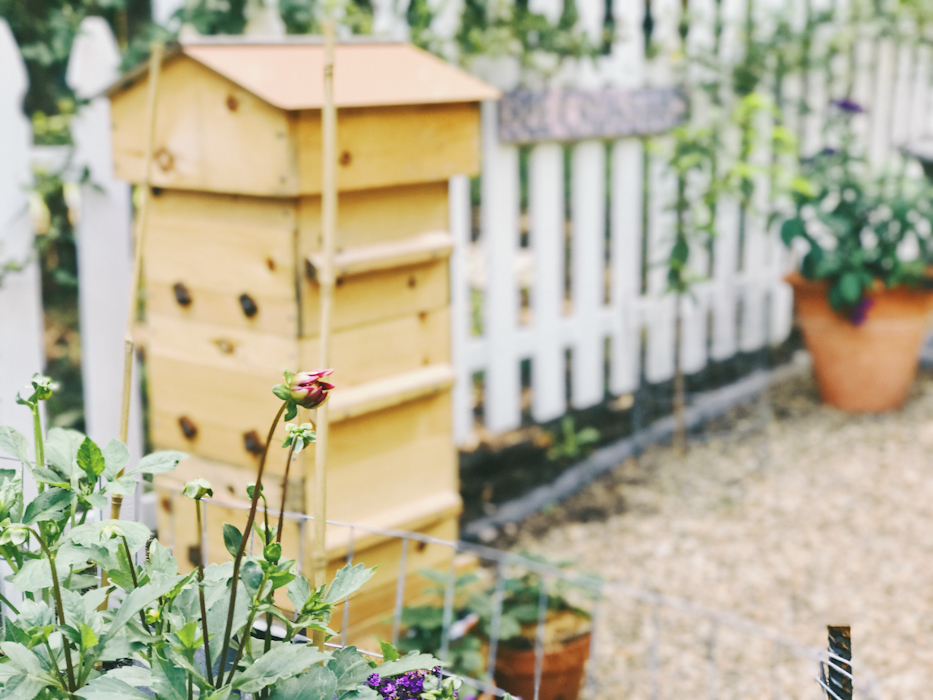
To witness a swarm is pretty amazing. Have you ever stood under a thunderstorm with lightning flashing right over your head? I can only liken it to that. It’s awe inspiring. As a beekeeper though, it can cause a bit of a kerfuffle and even while telling myself that it’s OK, this is normal, my natural instinct is to panic. I do have a bait hive set up in the garden in hopes that maybe some bees–mine or someone else’s–will want to move in but I haven’t had luck even with old comb and a bit of lemongrass oil to try and tempt them. I’ve watched our swarms move up to the tippity-top of the very tall trees in our garden–too high to try and capture–and then several hours later they vanish. They know better than I do what’s best for them and have probably found a hollow tree somewhere in these woods and are having little bee parties to celebrate their good fortune and their new digs.
Thanks for reading!

Please note: This beekeeping series is not intended to provide any advice and I hope it doesn’t come off as though I’m preaching about the right and wrong way to keep bees. I am a brand new beekeeper and have SO MUCH TO LEARN. This is simply a journal of our experiences and my rambling thoughts as we learn more about honey bees.
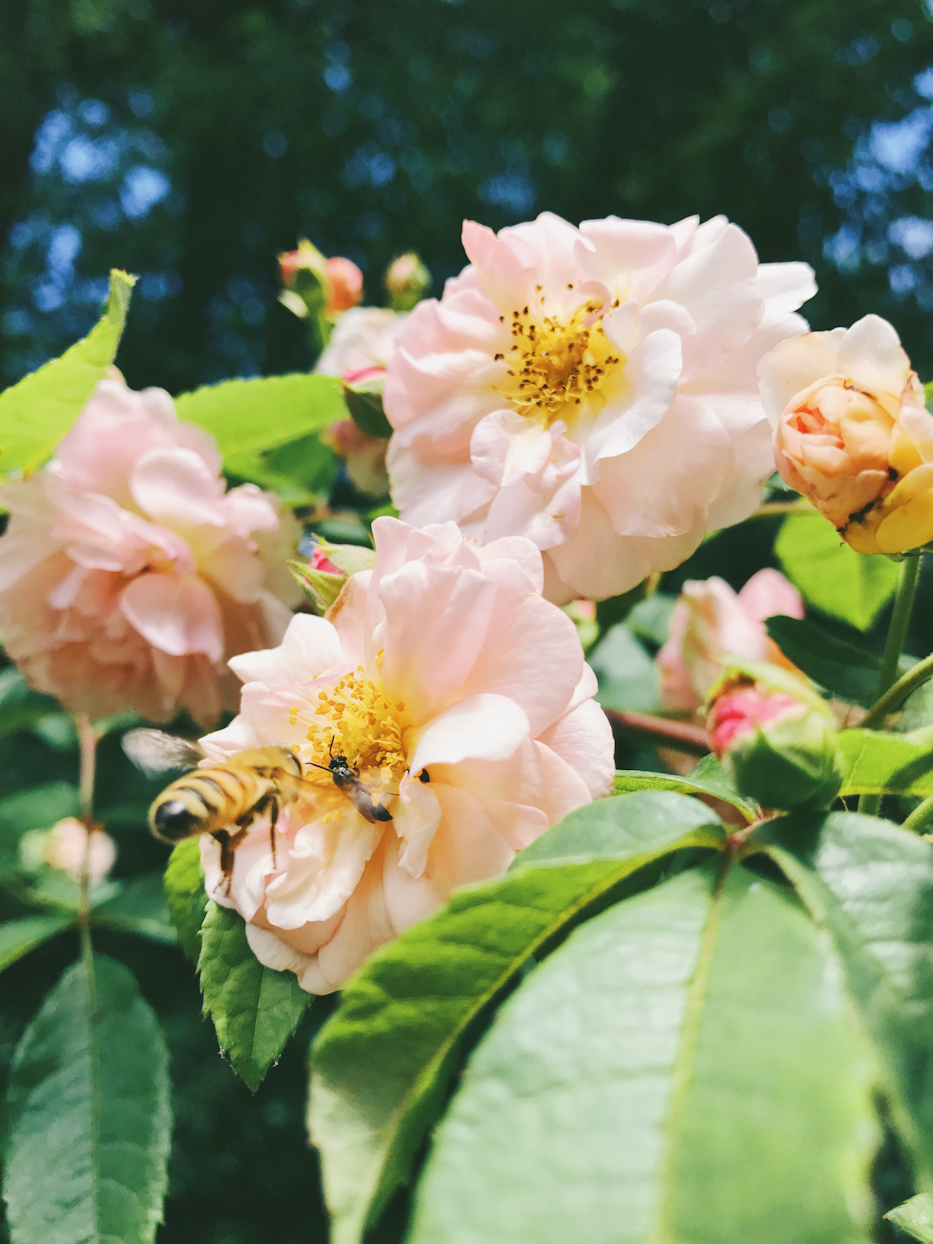


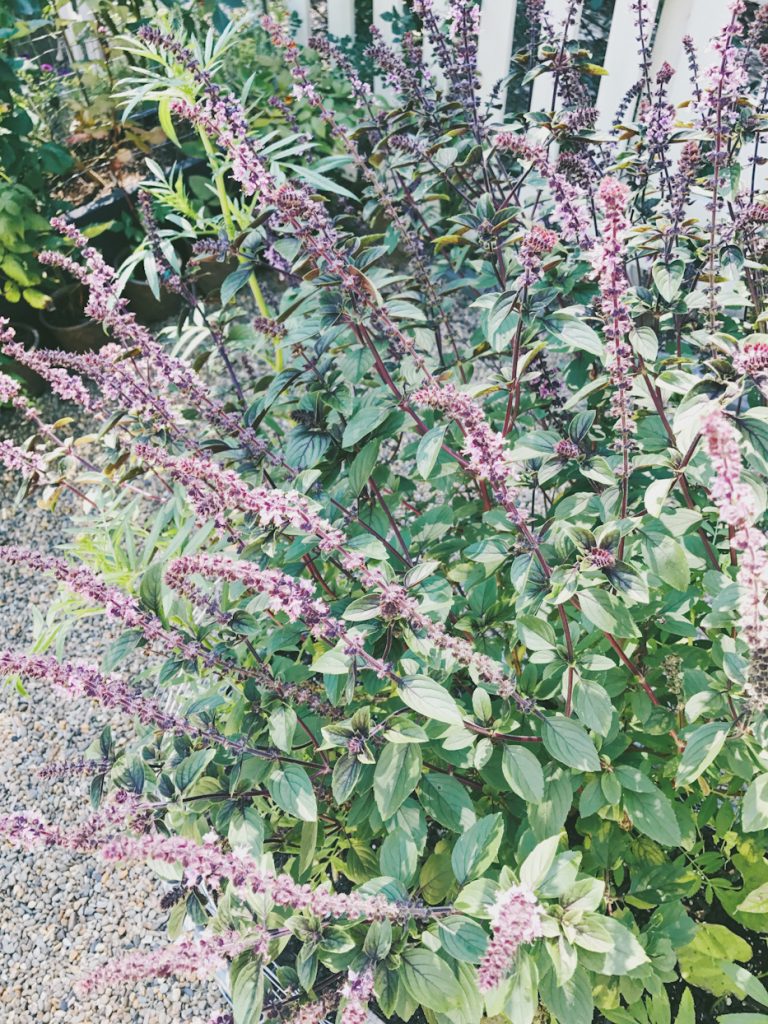
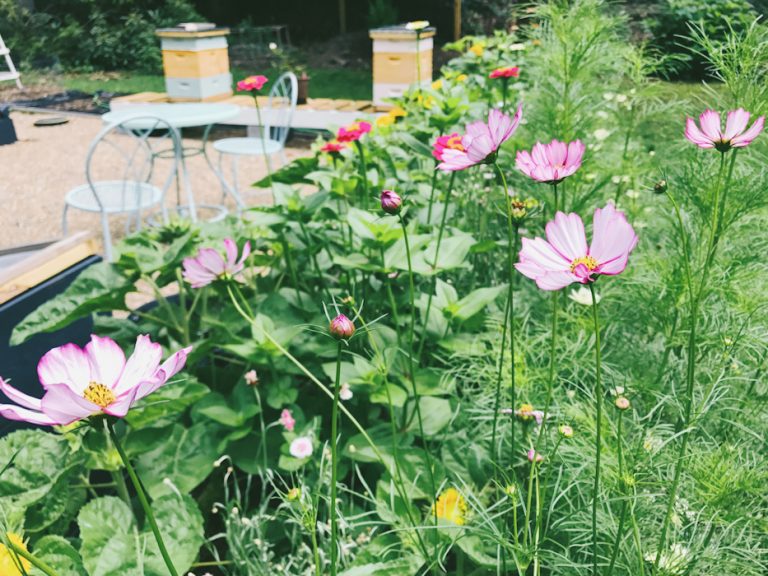
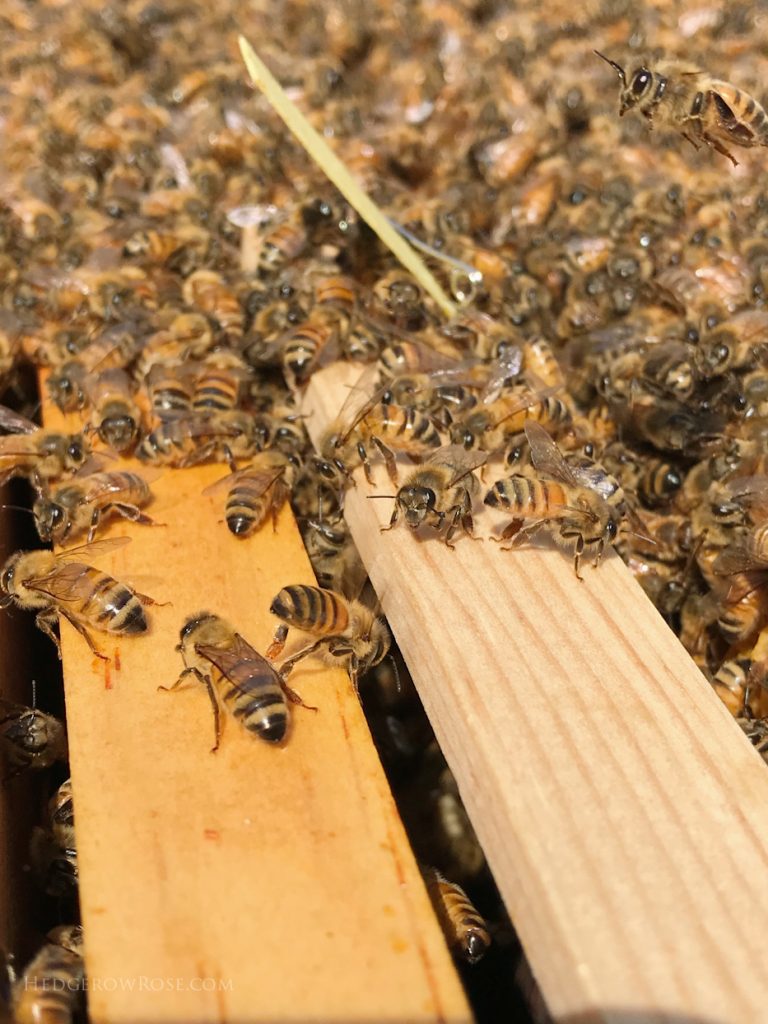
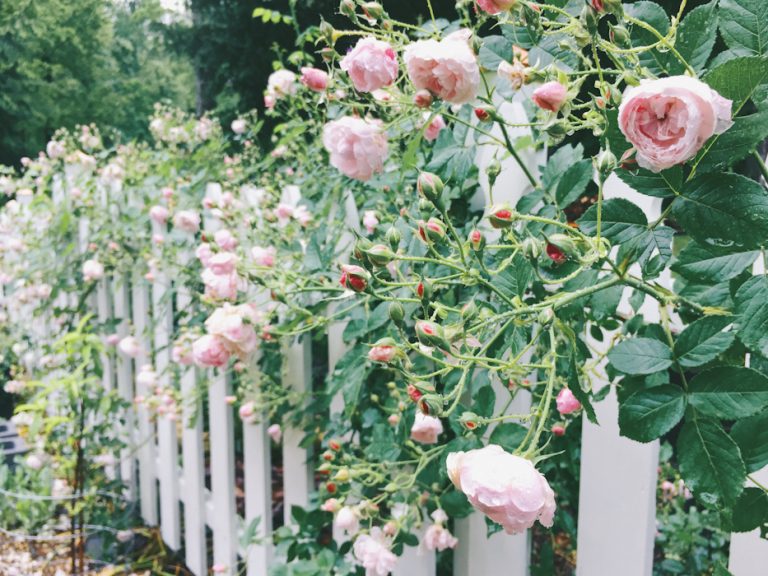

Gorgeous photos, as always.
Thank you for your visit, Erica!
Excellent article, I enjoyed it so much! And damn girl, how do you take such great photos? Did you get a new camera, or are you using your phone?
Well gosh, thank you! Nope, no new camera….still using the old iPhone. I do like to use apps to help me process the photos, tho. “Faded” is my favorite.
Nope, no new camera….still using the old iPhone. I do like to use apps to help me process the photos, tho. “Faded” is my favorite.
Wow, so interesting. Like whole different world. Thank you for sharing what you are learning.
Thank you for reading!
Thoroughly enjoyed reading about the bee swarms, I’m learning with you!
Hi Janet, thank you for your visit! I’m glad you’re enjoying the bee posts!